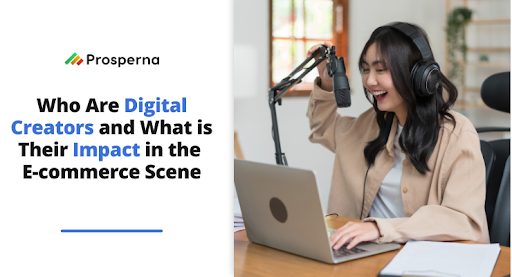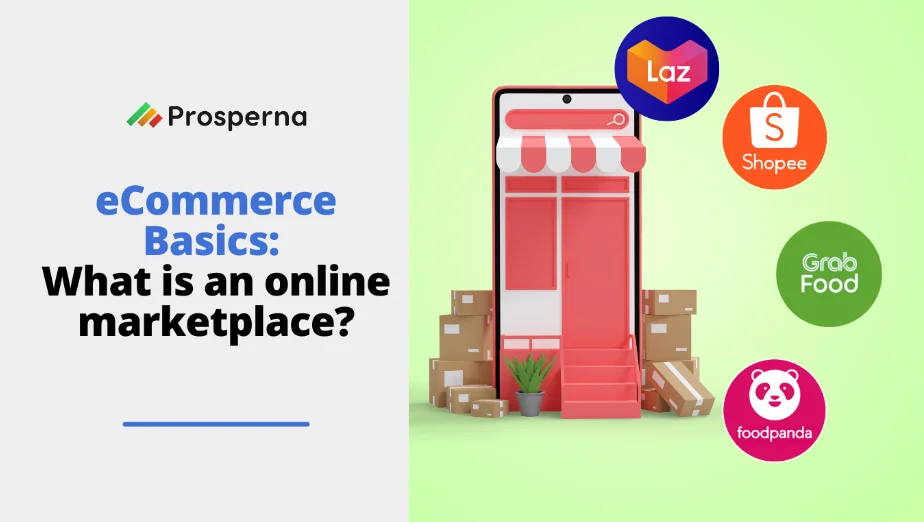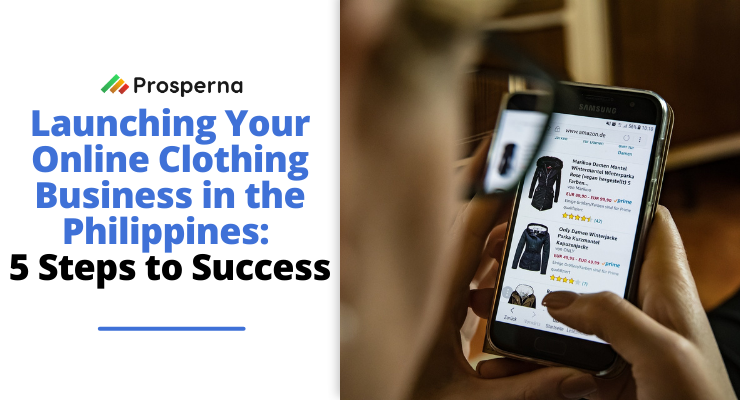With the rise of social media and eCommerce, digital creators have emerged as an influential force in the online landscape.
But who are they, and what impact do they have on the eCommerce scene?
In this blog post, we’ll explore the world of digital creators and their role in shaping the online marketplace.
What is a Digital Creator?
Digital creators are individuals who create content for digital platforms such as social media, blogs, and websites. This content can take many forms, including videos, photos, blogs, and podcasts.
Digital creators often have large followings and engage with their audiences by sharing their opinions, experiences, and knowledge on specific topics.
They have become increasingly important in the eCommerce scene as they can influence consumer behavior and purchasing decisions.
According to a survey conducted by GlobalWebIndex, 54% of internet users aged 16-64 have followed an influencer or celebrity on social media.
In the Philippines, a survey by Kantar Media found that 55% of Filipinos who use social media have made a purchase based on a recommendation from a digital creator.
As we continue to rely more on technology and digital platforms, digital creators will only become more important in shaping our online experiences.
Examples of Digital Creators in the Philippines
The Philippines has a thriving community of digital creators, with many individuals making a name for themselves on social media platforms such as YouTube, Facebook, and Instagram.
One of the most popular digital creators in the Philippines is Ranz Kyle, who has over 14 million subscribers on YouTube and is known for his dance videos and vlogs.
Another well-known digital creator is Wil Dasovich, who has over 2 million subscribers on YouTube and is known for his travel vlogs and inspirational videos.
Beauty and lifestyle content is also popular in the Philippines, with creators like Anne Clutz and Say Tioco sharing their beauty routines and product recommendations with their followers.
Overall, the Philippines has a diverse and vibrant community of digital creators, with many individuals carving out their niche and building loyal followings.
What Types of Products Do Digital Creators Create?
Digital creators have the flexibility to create a wide range of products, including digital and physical products, as well as services that align with their personal brand and cater to the needs and interests of their audience.
These products can include e-books, courses, tutorials, software, merchandise, clothing, accessories, beauty products, and more.
Digital creators may also offer services such as photography, graphic design, web development, or consulting services.
Additionally, they may create sponsored content for brands, including product reviews, endorsements, and advertising campaigns.
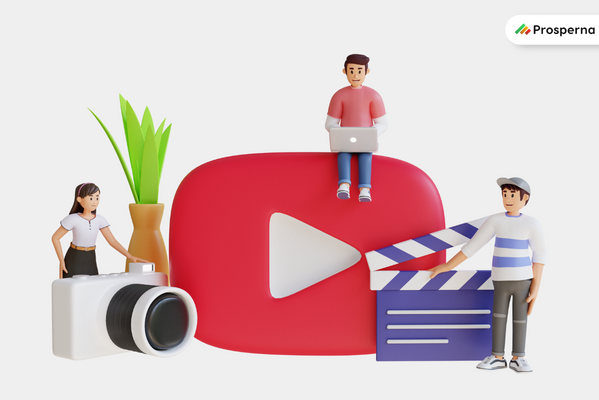
How Digital Creators are Helping Increase eCommerce Sales by 5x
Digital creators have the potential to help small businesses in the Philippines boost their ecommerce sales by 5x, as the country has a large and growing market for online shopping.
According to Statista, the ecommerce market in the Philippines reached $17 billion in 2021, with 73 million online active users, and is expected to grow by 17% through 2025.
Here are some ways that digital creators can leverage their skills to help small businesses tap into this lucrative opportunity:
- Create engaging and informative content about the products or services offered by the small businesses. Digital creators can showcase the features, benefits, and testimonials of the products or services in an appealing and authentic way, using their own voice and style. This can help build trust and awareness among potential customers, as well as drive traffic to the ecommerce platforms where the products or services are sold.
- Collaborate with the small businesses to offer discounts, giveaways, or incentives to their followers or subscribers. Digital creators can partner with the small businesses to create exclusive offers or promotions for their audience, such as coupon codes, free samples, or contests. This can help generate interest and encourage them to make a purchase or refer others to do so.
- Use social media platforms to amplify the reach and visibility of the small businesses. Digital creators can use their social media accounts to share their content about the products or services, as well as interact with their followers or subscribers. They can use hashtags, tags, stories, reels, live streams, or other features to boost their exposure and engagement. This can help expand the customer base and brand awareness of the small businesses.
- Provide feedback and insights to the small businesses on how to better marketing their products online. Digital creators can use their expertise and experience to offer suggestions or recommendations to the small businesses on how to use enhance their products or services, such as quality, design, packaging, delivery, customer service, etc. This can help improve customer satisfaction and retention, as well as increase repeat purchases and referrals.
- Educate and inspire other digital creators to support the small businesses. Digital creators can use their platforms to share their stories and experiences of working with the small businesses, as well as highlight the benefits and challenges of doing so. They can also encourage and motivate other digital creators to collaborate with or promote the small businesses, as well as share best practices and tips on how to do so effectively. This can help create a network and community of digital creators who support each other and the small businesses.
By following these strategies, digital creators can help small businesses in the Philippines increase their ecommerce sales by 5x, while also creating value for themselves and their audience.
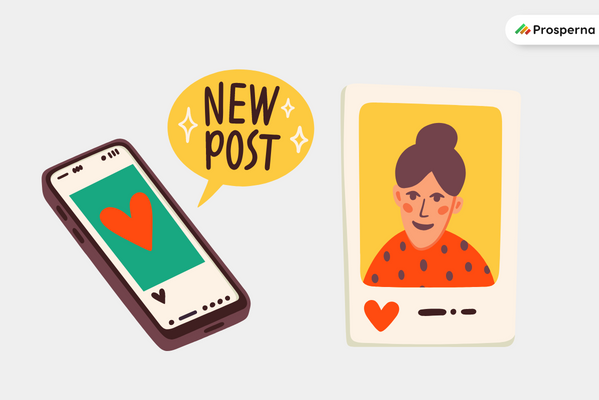
Future of Digital Creators
In the Philippines, digital creators have a significant impact on the purchasing behavior of their followers, with many consumers trusting their recommendations when it comes to buying products online.
According to a survey by Rakuten Insight, Filipinos who follow influencers have purchased clothing and fashion items, beauty products, electronics and gadgets, food and beverages, as well as travel packages and hotel accommodations based on influencer recommendations.
1. Emerging Trends
The future of digital creators is filled with emerging trends that are reshaping the industry. Some of the emerging trends include the rise of short-form video content, the increased popularity of live streaming, and the growth of augmented and virtual reality.
Creators who can leverage these trends and adapt to changing technologies will likely have an edge in the industry.
2. New Opportunities
As the digital economy continues to grow, there are many new opportunities for digital creators to monetize their content. Creators can leverage affiliate marketing, brand sponsorships, and merchandise sales to generate revenue.
Additionally, emerging technologies like blockchain and NFTs (non-fungible tokens) offer new opportunities for creators to monetize their work and build their brand.
3. Potential Challenges
While there are many opportunities for digital creators, there are also potential challenges that they may face in the future.
One challenge is increased competition as more creators enter the industry and vie for attention from audiences and brands.
They may also face pressure to produce more content at a faster pace, which can lead to burnout and creative exhaustion.
Creators must navigate the ever-changing landscape of social media algorithms and monetization policies, which can impact their ability to reach their audience and generate revenue.
Digital Creator FAQs
What is the difference between digital creator and an influencer?
While the terms “digital creator” and “influencer” are often used interchangeably, there is a difference between the two. Digital creators focus on creating and producing content, while influencers focus on promoting and endorsing products or services. While some digital creators may also have a significant following and be considered influencers, not all influencers are digital creators.
How do digital creators earn income?
Digital creators earn income through various channels, such as sponsored content, affiliate marketing, ad revenue, and selling their products or services. Brands may pay digital creators to create content promoting their products or services or provide them with affiliate links to share with their audience. Digital creators can also earn revenue through advertisements placed on their content, such as YouTube ads. Additionally, many digital creators create and sell their own digital or physical products, such as courses, e-books, or merchandise, to monetize their following.
Final Thoughts
Digital creators are content creators who use technology to produce and distribute content across various digital platforms. Their impact on the eCommerce scene is significant, with many consumers relying on their recommendations and purchasing behaviors.
As the eCommerce industry continues to grow, digital creators have become an integral part of the online marketplace. They have the ability to create and sell a wide range of products that cater to the needs and interests of their audience, and their personal brand is what sets them apart from other creators in their niche.
Prosperna, Your Partner to eCommerce Success
Prosperna is an all-in-one eCommerce platform for Philippine businesses and digital creators. We are on a mission to empower 1 million Filipinos with simple and affordable eCommerce solutions.
In fact, we are super passionate about helping Philippine businesses and digital creators we’re giving you a free account forever!
Want to start selling online? Create your free-forever Prosperna account now.
